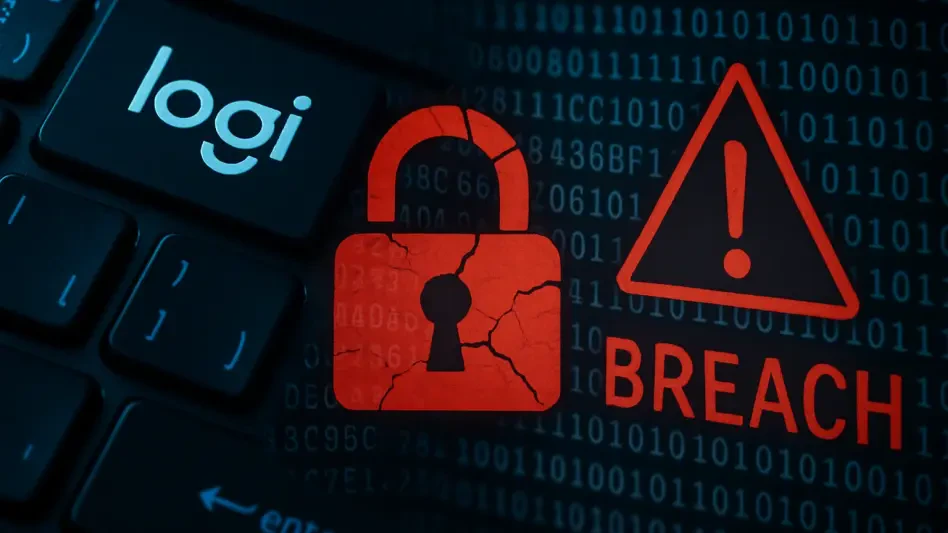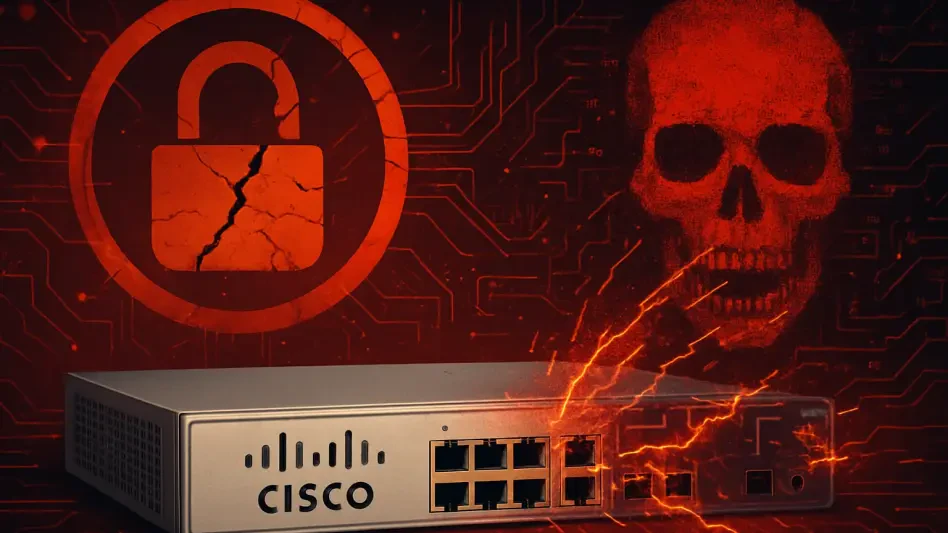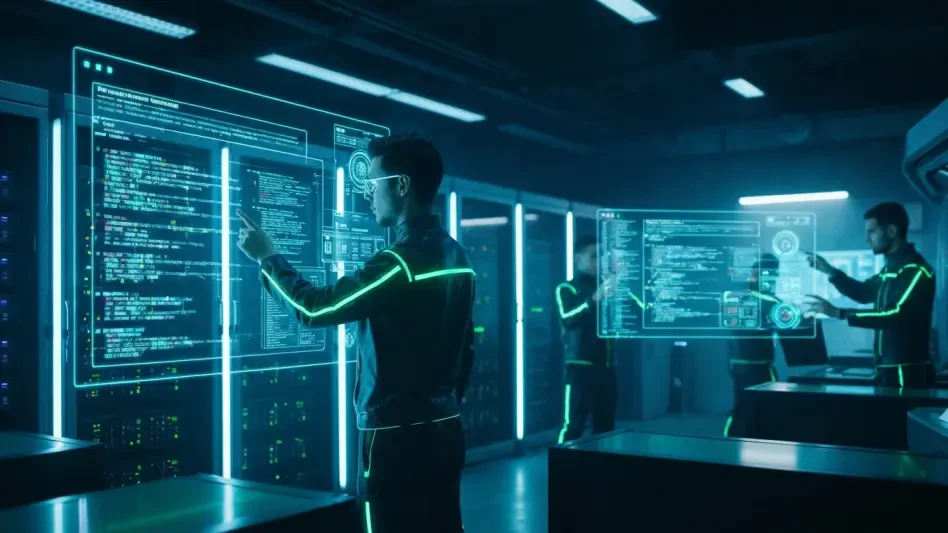In a digital era where cybersecurity threats loom larger than ever, the revelation on November 14 of a significant breach at Logitech International S.A. sent a chilling message through the tech industry, highlighting the fragility of even the most established corporations. This incident, involving a zero-day vulnerability in a third-party software platform, allowed the Clop ransomware group to exfiltrate internal data, touching on limited information about employees, consumers, customers, and suppliers. Though no highly sensitive details were compromised, the breach shook confidence in the security of interconnected systems, spotlighting hidden flaws that can unravel robust defenses in an instant, pushing companies to rethink their reliance on external software. This event not only highlights Logitech’s response but also casts a wider lens on the evolving nature of cyber threats, where attackers exploit unseen weaknesses with devastating precision, urging a deeper examination of industry-wide vulnerabilities.
The Nature of Zero-Day Threats
Unseen Flaws and Unpredictable Attacks
The Logitech breach, first disclosed in mid-November, underscores the insidious nature of zero-day vulnerabilities—flaws in software that remain unknown to vendors until they are actively exploited by malicious actors. Discovered in a third-party platform, possibly Oracle E-Business Suite, this specific vulnerability, tagged as CVE-2025-61882, was leveraged by attackers since July before a patch was issued on October 4. Logitech’s swift action to apply the fix and engage external cybersecurity experts mitigated the immediate fallout, but the incident reveals how even giants in the tech space are not immune to such stealthy attacks. These zero-day exploits strike without warning, bypassing traditional security measures and exposing critical data. The unpredictability of these threats challenges the very foundation of cybersecurity, as companies often lack the tools or awareness to detect flaws before they are weaponized, leaving them vulnerable to sophisticated adversaries who operate in the shadows.
Beyond the specifics of Logitech’s case, the broader challenge of zero-day threats lies in their ability to exploit supply chain dependencies, a growing concern in today’s interconnected tech landscape. Many organizations rely on external software for critical operations, yet they often have limited control over the security of these platforms. When a flaw emerges in such a system, it creates a ripple effect, potentially compromising multiple entities down the line. Logitech’s experience highlights how a single point of failure in a third-party tool can become a gateway for attackers, amplifying risks across the board. This incident emphasizes the urgent need for enhanced visibility into vendor security practices and more rigorous vetting processes. As cyber threats continue to evolve, the tech industry must grapple with the reality that no system is entirely safe from hidden vulnerabilities, pushing for proactive strategies to anticipate and neutralize risks before they manifest into full-scale breaches.
Hidden Risks in Digital Ecosystems
Another layer to the zero-day challenge is the sheer complexity of modern digital ecosystems, where countless integrations and dependencies create a web of potential entry points for attackers. Logitech’s breach illustrates how a single unnoticed flaw in a third-party platform can jeopardize an entire organization’s data integrity, even with robust internal defenses in place. The fact that the vulnerability went undetected for months before exploitation speaks to the difficulty of monitoring every component of a sprawling tech stack. Companies often operate under the assumption that vendors maintain airtight security, but this incident proves that assumption can be costly. It raises critical questions about accountability and oversight, urging businesses to demand greater transparency from their software providers while investing in tools that can detect anomalies across all layers of their systems, no matter how peripheral they may seem.
The silent nature of zero-day exploits also means that damage can accrue long before a breach is even discovered, as was evident in Logitech’s situation where data exfiltration occurred over an extended period. This delayed detection compounds the harm, giving attackers ample time to analyze stolen information and plan secondary attacks. For Logitech, the absence of highly sensitive data in the breach was a fortunate outcome, but the potential for cascading effects remains a concern across the sector. The tech industry must recognize that zero-day vulnerabilities are not isolated incidents but systemic risks embedded in the very architecture of digital operations. Addressing these requires a shift toward continuous monitoring and threat hunting, ensuring that even the smallest irregularities are flagged and investigated. Only through such diligence can organizations hope to stay ahead of threats that, by design, evade conventional security paradigms.
Cybercriminal Tactics and the Clop Gang
Evolving Strategies in Data Extortion
At the heart of the Logitech breach lies the sophisticated approach of the Clop ransomware group, a cybercriminal outfit that has pivoted from traditional system encryption to a more insidious form of attack—data theft and extortion. Unlike earlier ransomware tactics that locked systems and demanded payment for decryption, Clop’s strategy in this case focused on quietly exfiltrating internal data and using it as leverage to pressure victims. By threatening to expose sensitive information, the group creates a powerful incentive for compliance without disrupting operations, a method that proved effective in Logitech’s scenario. This shift reflects a broader trend in cybercrime, where stolen data becomes a weapon of coercion rather than a mere byproduct of an attack. Clop’s ability to exploit a zero-day flaw without immediate detection underscores the precision and patience of modern attackers, who prioritize stealth over brute force in their quest for profit.
The implications of Clop’s tactics extend far beyond a single company, signaling a new era of cyber threats where the value lies in information rather than system control. In Logitech’s case, the exfiltrated data included limited details about various stakeholders, which, while not catastrophic, still poses risks if weaponized for further malicious activities. The group’s focus on third-party software vulnerabilities, such as the one likely tied to Oracle E-Business Suite, demonstrates a calculated effort to target enterprise-grade platforms that serve multiple organizations, maximizing their reach and impact. This approach reveals a chilling adaptability, as cybercriminals refine their methods to exploit the trust and interconnectivity inherent in business ecosystems. The tech sector must respond by rethinking how data is protected at every touchpoint, recognizing that even non-critical information can become a liability in the hands of determined adversaries like Clop.
Stealth and Sophistication in Cyber Attacks
Delving deeper into Clop’s methods, the Logitech breach showcases a level of stealth that sets modern cyberattacks apart from their predecessors. The group’s use of a zero-day exploit to gain access without credentials highlights an alarming sophistication, allowing them to operate undetected for months. This prolonged presence within a system speaks to the use of advanced techniques, possibly including multi-stage Java implants, designed to evade traditional security tools. For Logitech, the delayed discovery of the breach meant that attackers had ample opportunity to map out internal networks and extract valuable data at their leisure. Such tactics are a wake-up call for organizations still relying on reactive defenses, as they illustrate how cybercriminals can blend into legitimate activity, leaving little trace until the damage is done. The industry must adapt by prioritizing real-time threat detection and anomaly-based monitoring to catch subtle indicators of compromise before they escalate.
Moreover, Clop’s broader campaign against multiple organizations using the same vulnerability suggests a coordinated, systematic approach to exploitation that amplifies the threat level. Unlike isolated attacks, these efforts target systemic weaknesses in widely used software, turning a single flaw into a widespread crisis. Logitech’s experience is just one piece of a larger puzzle, as Clop continues to refine its playbook to exploit enterprise environments with surgical precision. This pattern of behavior demands a collective response from the tech community, including greater sharing of threat intelligence to identify and neutralize exploits before they spread. Governments and private entities alike must collaborate to disrupt the infrastructure that enables groups like Clop to thrive, while companies need to invest in advanced cybersecurity training to equip their teams against evolving threats. Only through such unified efforts can the industry hope to counter the stealth and ingenuity of today’s cybercriminals.
Industry Implications and Systemic Risks
Lessons for Tech Security and Regulation
The Logitech breach serves as a critical case study for the tech industry, revealing systemic risks that transcend individual companies and demand a collective rethinking of cybersecurity practices. Zero-day exploits, as seen in similar incidents affecting platforms like Microsoft Windows and Google Chrome this year, highlight a pervasive vulnerability in enterprise ecosystems where hidden flaws can be weaponized at scale. Logitech’s incident, while contained through rapid patching and transparent communication, underscores the limitations of current defenses against supply chain attacks. Experts advocate for multi-layered security architectures, such as zero-trust models, to minimize the impact of breaches by assuming no system is inherently safe. Additionally, regulatory frameworks like the General Data Protection Regulation (GDPR) loom large, with potential penalties for data protection lapses, especially if European consumer information is involved. This regulatory scrutiny adds another layer of urgency for companies to prioritize compliance alongside defense.
Beyond immediate security measures, the breach emphasizes the importance of transparency in maintaining stakeholder trust during a crisis. Logitech’s decision to disclose the incident through SEC filings and press releases, coupled with proactive engagement of cybersecurity experts, sets a benchmark for responsible incident handling. However, the event also exposes a broader industry challenge: the lack of control over third-party software security. As reliance on external platforms grows, so does the risk of cascading vulnerabilities that can affect entire sectors. The tech community must push for standardized security protocols among vendors and foster a culture of vigilance where every component of a digital ecosystem is scrutinized. Regulatory bodies may need to step in with stricter guidelines to enforce accountability, ensuring that data protection is not just a corporate priority but a legal imperative. Only through such comprehensive efforts can the industry hope to mitigate the systemic risks that zero-day exploits so starkly reveal.
Building Resilience Against Future Threats
Reflecting on the aftermath of Logitech’s breach, it becomes evident that building resilience against future cyber threats requires a fundamental shift in how organizations approach vulnerability management. The incident highlighted how even limited data breaches can lead to secondary risks, such as phishing campaigns or reputational damage, if not addressed holistically. Companies must invest in advanced detection tools that go beyond traditional antivirus solutions, focusing on behavioral analysis to identify subtle signs of compromise. Logitech’s collaboration with top cybersecurity firms to assess and contain the breach offers a model for leveraging external expertise, but such measures should be proactive rather than reactive. The tech sector needs to adopt a mindset of continuous improvement, regularly updating defenses to match the evolving tactics of groups like Clop. This includes stress-testing systems against potential zero-day scenarios to uncover weaknesses before attackers do.
Furthermore, the Logitech case points to the value of cross-industry cooperation in combating cyber threats that transcend individual organizations. Sharing threat intelligence about zero-day vulnerabilities and attacker methodologies can help create a collective shield against widespread exploitation. Governments also have a role to play, potentially offering incentives for companies that demonstrate robust cybersecurity practices while imposing stricter penalties for negligence. For Logitech and its peers, the breach was a reminder that cybersecurity is not a static goal but an ongoing journey requiring adaptability and foresight. As regulatory landscapes tighten and cybercriminal tactics grow more sophisticated, the industry must unite to develop innovative solutions, from AI-driven threat prediction to enhanced supply chain audits. By learning from past incidents, the tech world can take steps to fortify its defenses, ensuring that future breaches are met with stronger, more coordinated responses.








